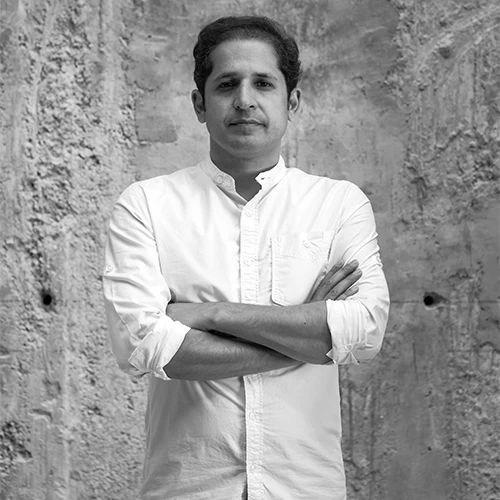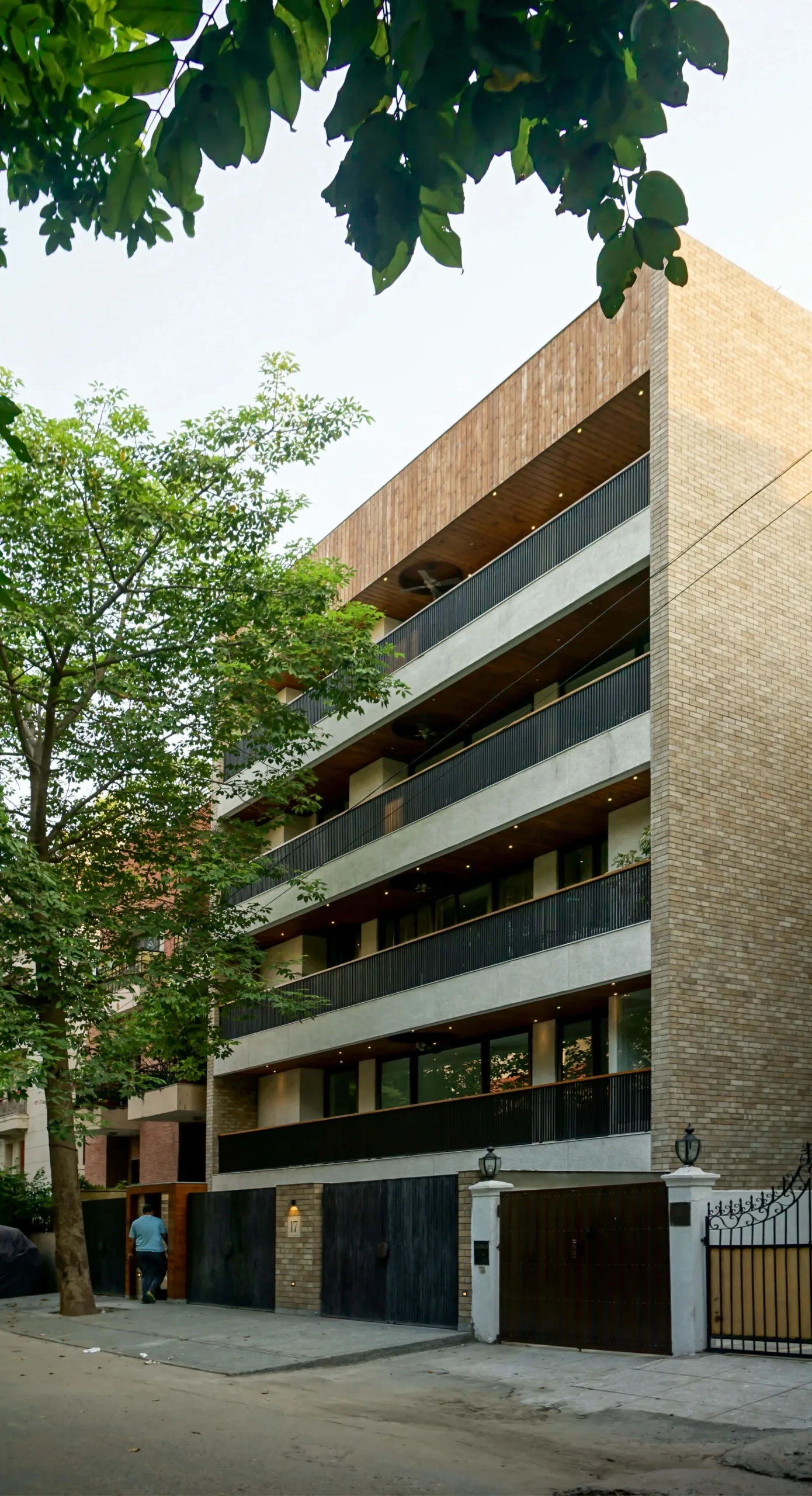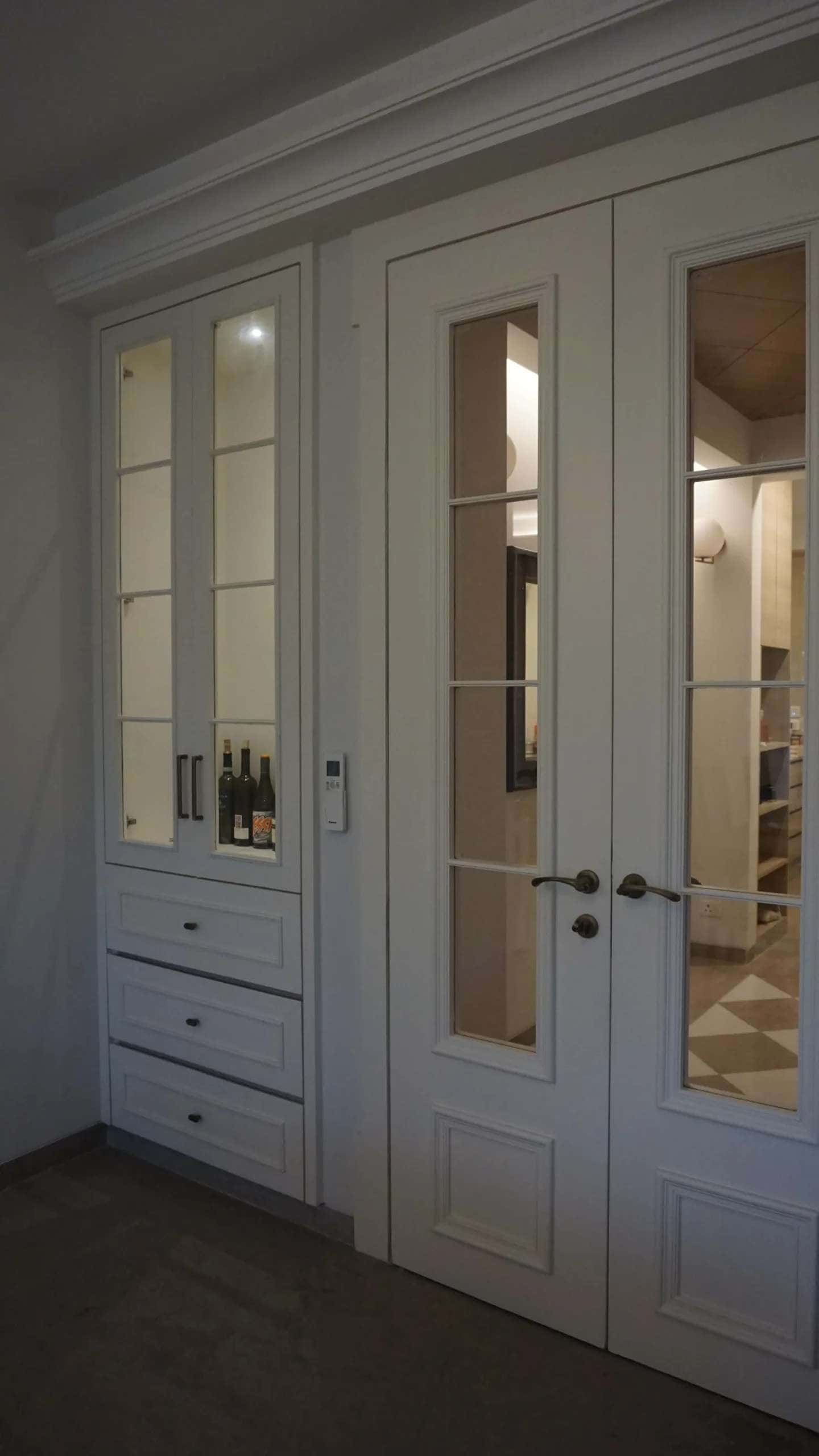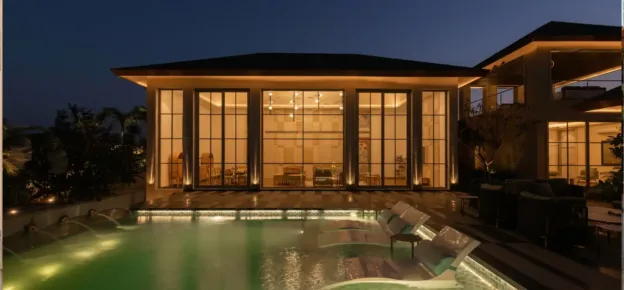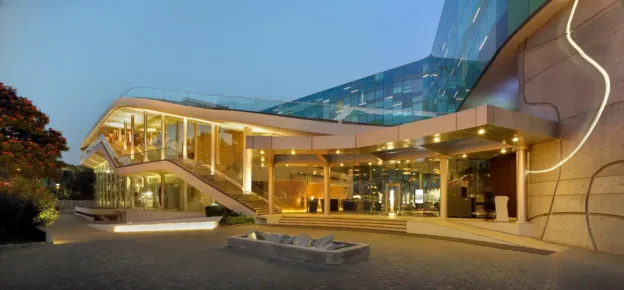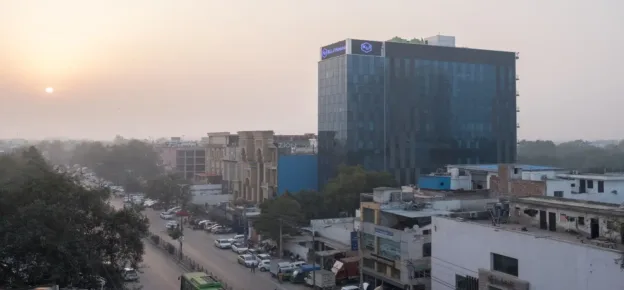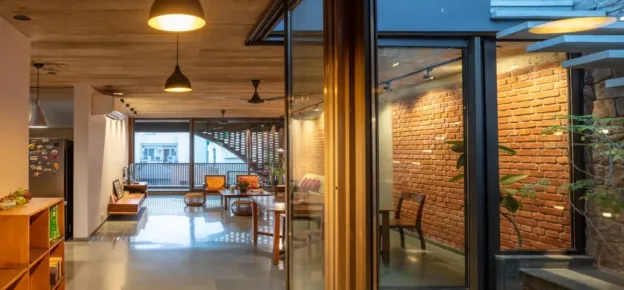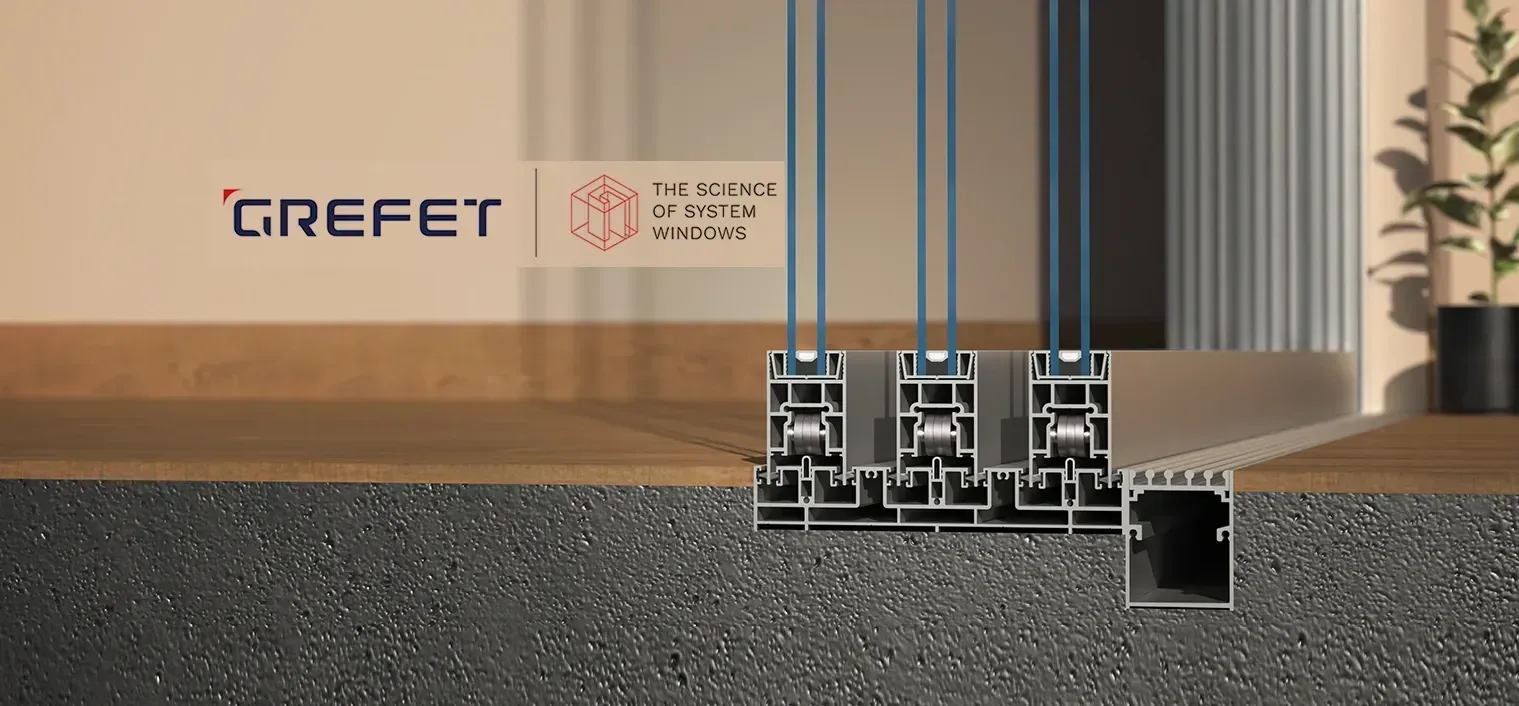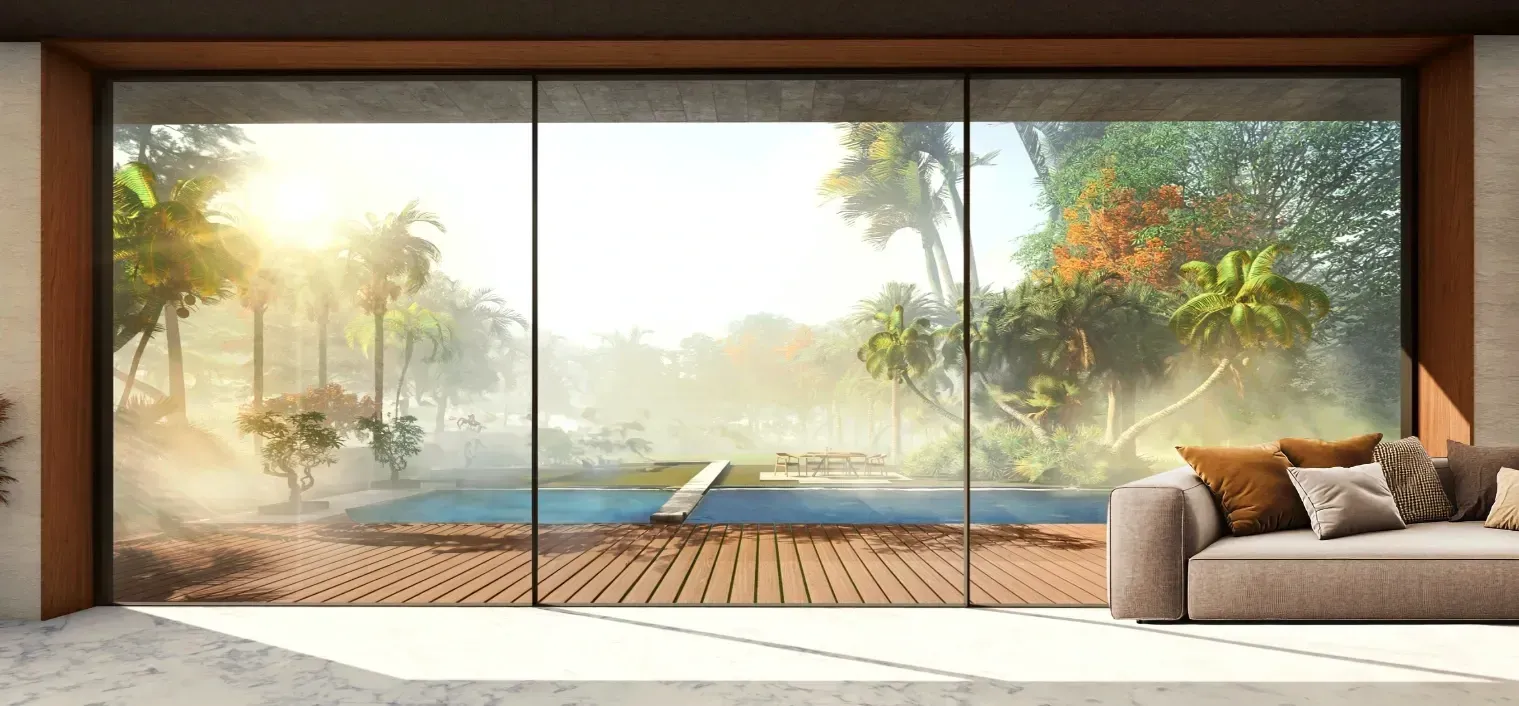Vasant Vihar began life in post-independence Delhi as a sleepy, quiet suburb to the administrative capital, occupied largely by senior government functionaries. The urban growth has affected the locality both in spirit and in form. Single-family homes have been replaced with multistorey apartment buildings, with subterranean level offices and parking areas. The façades of the buildings and the landscape had a conflicting context with the mix of old and contemporary designs.
The owners wanted to rebuild an ageing building on a site of 350 Sq m to elicit maximum benefit of the area offered by new regulations. This would not only allow the owners more space but also reaffirm the status of the property as a family home for the next generation.
Six apartments were planned, laid over 4 floors. Additionally, four workspaces were created in the basement, along with dedicated car parking for eight cars. The building was designed to provide common amenities, but complete privacy to the occupants from one another. To achieve this, a common entrance lobby on the ground floor provides access from multiple access points to the main stair and elevator.
On the first two of the upper floors, the building is divided into two apartments, each with a living room, kitchen and two bedrooms, with ensuite bathrooms. The full width of the building ensures that each of the rooms receives sunlight and adequate ventilation through full-sized windows. These windows open into a five-foot-wide continuous wood-lined verandah, designed to maintain complete privacy from surrounding neighbours.
Dense, vertically oriented railings provide the requisite safety for the deep verandahsThe top two floors have a single apartment each, occupying the complete 2200 Sq ft area. Each of these apartments is lavishly appointed with a large living room, three large bedrooms with ensuite bathrooms and its own private rear verandah. There is a centrally positioned kitchen, connected through a utility balcony to a staff room, with its own bathroom.
The façade of the building is an exercise in restraint. The end walls have been finished in a pale cream coloured brick, chosen for its bright and robust nature. The slim horizontal bands on each floor are finished in exposed grit wash, a hardy surface texture that allows white chips to reflect light and avoid absorption into the structural slab. Dense, vertically oriented railings provide the requisite safety for the deep verandahs, and the building is capped with a band of exterior-grade wood, designed to weather and turn to a light shade to complement the brick.
The project illustrates an evolving understanding of the durability of materials in our harsh climate. Brick is inherently durable – Clay bricks last almost indefinitely, being largely immune to fire, wind-borne debris, and temperature fluctuations, and their exceptional thermal mass helps mitigate heat transfer. On a TCO and lifecycle basis, bricks outperform almost every other building material, effectively reducing the environmental impact from other systems like air conditioning and heating.
Aluminium windows with double glazing are used all around. The terrace is insulated with PU sheets overlaid with Kota stone, and LED lighting is used throughout the building. Sensors are fitted in the washrooms, and they automatically control the lights based on movement and ambient light conditions. The apartments are secured with a keyless central security system with digital access.
The building façade reimagines the contemporary apartment building, not as an opportunity to stretch the boundaries of architectural possibility, but to hone the façade to the key essentials of sustainability.
Quick Facts:
|

